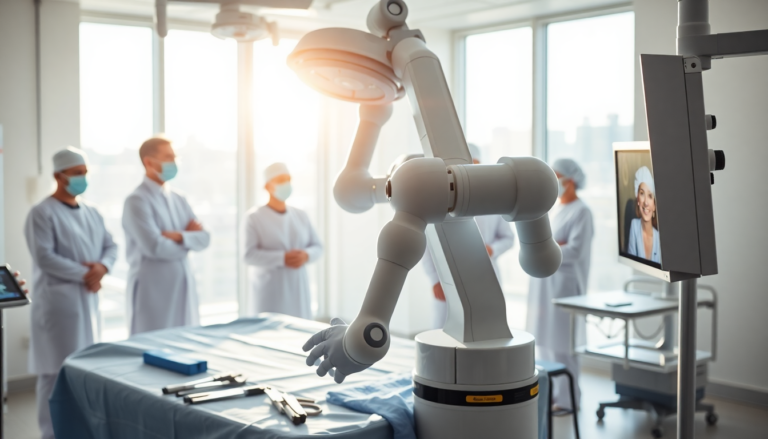Argomenti trattati
In a remarkable advancement for the healthcare sector, a surgical robot has successfully performed a gallbladder operation—all thanks to vocal instructions from a surgeon. This milestone not only highlights the capabilities of autonomous surgical robots but also points to their potential to revolutionize medical procedures and significantly improve patient outcomes.
The Milestone Operation
On [insert date], a surgical robot completed a gallbladder removal procedure, deftly responding to verbal commands from a senior surgeon. This innovative approach involved training the robot using videos of the surgical process, allowing it to adapt its actions based on real-time instructions. As lead study author Ji Woong ‘Brian’ Kim notes, this development tackles critical challenges in deploying autonomous surgical robots in practical settings. Isn’t it fascinating how technology is evolving to enhance our medical capabilities?
The robot’s performance was impressive, executing the procedure with precision while also showing the ability to handle unexpected scenarios effectively. This adaptability is crucial in surgical environments, where conditions can shift rapidly, demanding quick decision-making. The study underscores the potential for robotic systems to closely mimic human surgical training, making them increasingly viable for integration into hospitals that may lack advanced technical resources.
Imitation Learning: A Game Changer
This groundbreaking approach harnesses a concept known as imitation learning—similar to how we humans learn through observation and practice. The robot’s training process combined machine learning with extensive visual instruction, enabling it to master the gallbladder removal operation with remarkable accuracy. After observing tutorial videos, the study revealed a stunning 100 percent success rate, highlighting the effectiveness of this training method. How incredible is it that a machine can learn so much from simply watching?
Dr. Mathias Unberath, an associate professor at Johns Hopkins University, emphasized the challenges of translating complex surgical skills into code. He pointed out the necessity of observational learning in training robots. By learning from human actions, the process becomes simpler and significantly enhances the robot’s operational capabilities, making it a valuable ally in modern healthcare.
The Future of Robotic Surgery
The implications of this advancement go beyond just surgical efficiency; they also promise broader access to healthcare services. As autonomous robots become more skilled at performing procedures through natural language interaction, their potential use in diverse medical settings expands. This increased accessibility could help bridge the gap in healthcare availability, particularly in underserved regions. Who wouldn’t want to see more people benefiting from cutting-edge medical technology?
While the idea of robotic surgeons might seem like something out of a sci-fi movie, the reality is that they are already making significant strides in the operating room. As someone who has experienced robotic-assisted surgery firsthand, I can vouch for the precision and effectiveness of these machines. Sure, they may lack the human touch, but their surgical capabilities are undeniably impressive.
As the field of robotic surgery continues to evolve, we can anticipate more innovations that enhance the quality of care while reducing recovery times and scarring. With ongoing advancements in technology, the future of healthcare looks bright, potentially allowing more patients to benefit from the efficiency and accuracy of robotic-assisted procedures. Isn’t it exciting to think about what’s next?

